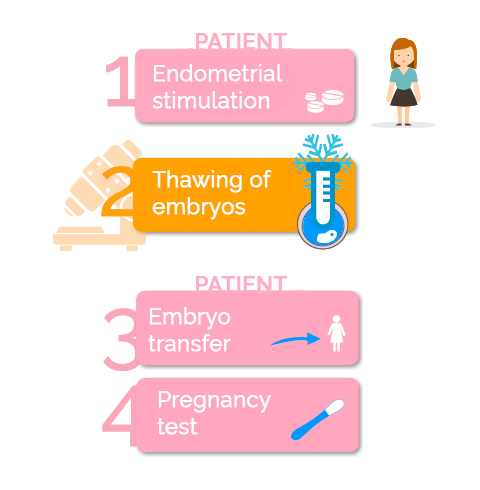Frozen Embryo Transfer (FET): Transfer of ‘cryopreserved’ or frozen embryos

Frozen Embryo Transfer (FET) or transfer of ‘cryopreserved’ embryos is a technique where a previously vitrified embryo is transferred to the patient. These embryos were obtained during previous in vitro fertilization cycles, either because once the transfer was carried out there were spare good quality embryos or because for various reasons the transfer was postponed to another time.
What is the Frozen Embryo Transfer (FET)?

For whom is this technique indicated?
Frozen Embryo Transfer (FET) is indicated for:
- Couples who have attempted to get pregnant through in vitro fertilization cycles with fresh embryos, but couldn’t achieve an evolutionary pregnancy and the spare embryos were cryopreserved (frozen).
- Couples who want to have a new child and cryopreserve embryos for that reason
The cost of this reproduction treatment is much lower, since the treatment only requires preparing the endometrium and using an ultrasound scan to observe the ideal moment for the transfer. It is not necessary to repeat the phases of ovarian stimulation and follicular puncture. The process is shorter and fewer visits to the assisted reproduction centre are required.

